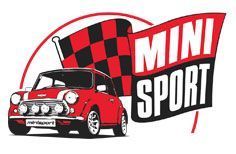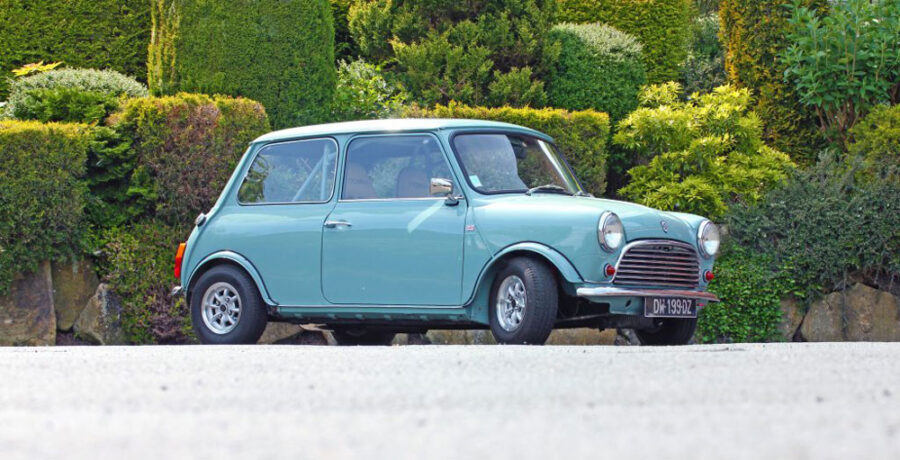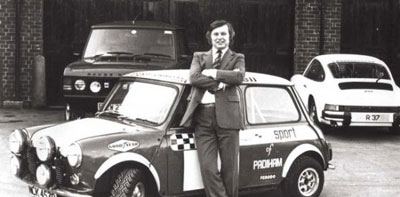 Throughout the last 60+ years, The Mini has carved out a unique reputation thanks to its exceptional design, driving experience and economical cost. Even today, despite its mass production days being behind it, this classic car is still loved by so many people – Mini restoration, repair and racing still being popular hobbies amongst people of all ages.
Throughout the last 60+ years, The Mini has carved out a unique reputation thanks to its exceptional design, driving experience and economical cost. Even today, despite its mass production days being behind it, this classic car is still loved by so many people – Mini restoration, repair and racing still being popular hobbies amongst people of all ages.
This continuing love of the Mini is precisely the reason the team here at Mini Sport are dedicated to keeping the spirit of this classic range of cars alive. As a family-owned business who retails (and creates) our own Mini parts – anything from Mini engines to Mini cables – we are extremely passionate about all models of this brilliant and beautiful car.
With so many models and so much history behind them, we feel it’s important to recognise how the Mini came to be, so in this blog we’re going to take a look at the progression of the Mini through the ages…
The Roots of The Mini
The roots of the Mini lie in the Suez Crisis, the name given to the invasion of Egypt by Israel, Britain and France in 1956. The reasons for the invasion was to regain the Western control of the Suez Canal (the main conduit of oil transportation to Western Europe at that point), which Egyptian prime minister, Gamal Abdel Nasser, had nationalised in response to Britain and the United States withdrawing their support for the construction of a major dam project. Later, Egypt would block Israeli ships from sailing through the strait that separated the two states, sparking the invasion.
As a result of the crisis, oil became in short supply and sales of cars fell. Whilst the Suez Crisis would end swiftly (pressure from the United States and the Soviet Union saw the withdrawal of the invading forces), the repercussions of the affair would be felt long after it was over. The lack of petrol and resulting car sales made the industry think long and hard about producing new designs that would make fuel last for longer.
The First Economical Cars
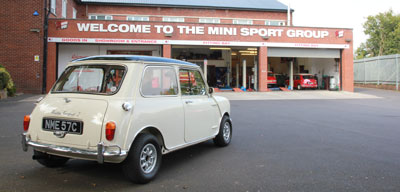 Whilst in the late-1950’s, importing vehicles was still relatively rare, this did not stop the likes of Fiat and the German ‘bubble car’ from entering the UK market; their abilities to run economically provided an attraction to those who were wanting to drive around Britain’s burgeoning road systems. Whilst these ‘microcars’ were tiny (not helpful to pack in the family or luggage) their running costs were somewhat less than the average British car at that point – sparking concern from local car manufacturers.
Whilst in the late-1950’s, importing vehicles was still relatively rare, this did not stop the likes of Fiat and the German ‘bubble car’ from entering the UK market; their abilities to run economically provided an attraction to those who were wanting to drive around Britain’s burgeoning road systems. Whilst these ‘microcars’ were tiny (not helpful to pack in the family or luggage) their running costs were somewhat less than the average British car at that point – sparking concern from local car manufacturers.
With this economical trend developing, the British Motor Corporation (BMC) decided to act on it and produce their own car that would offer better value for money, a great driving experience for booming families and at its heart, be ‘quintessentially British’. The result was the Austin/Morris Mini.
First released in 1959, the Mark I Mini consisted of a 10ft-long, 4ft-wide frame that would comfortably fit four people in – its transversely mounted engine and Mini cables helping to save space. The Mini was an immediate success and quickly grew in popularity; its use by celebrities of the time made it be seen as the car that ‘drove anyone who was anyone’ about – and what’s more, it was realistically affordable for most people too.
The Booming Popularity of The Mini
Think of the 1960’s and you may think about music, fashion, art, parties, England winning the World Cup – and the Mini. This new decade saw those post-war babies grow into young adults and with a sense of independence about them, this new vehicle offered them a great opportunity to explore a developing country for a relatively cheap fuel price.
The Mark I (and later, The Mark II) would become symbols of British culture in an era when such things exploded in popularity on the world stage. The production of the Mark II Mini underlined that – during its run from 1967-1970, the car would be assembled in no-less than nine different countries in Europe, Africa, Asia, Oceania and South America.
The Mini: A Racing Icon
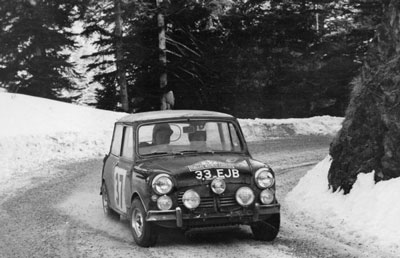 Perhaps what made the Mini brand of cars stand out was the willingness for the BMC management to explore new innovations. One of these was the Mini Cooper. Designed by the Mini’s original designer, Alec Issigonis along with Formula One racing car designer John Cooper, the Cooper was first introduced in 1961 and offered a sleeker driving experience. Fast and nippy, it was ideal to use in racing competition. When stationary, it was a picture to look at – even when going at those fast speeds, it still looked as beautiful.
Perhaps what made the Mini brand of cars stand out was the willingness for the BMC management to explore new innovations. One of these was the Mini Cooper. Designed by the Mini’s original designer, Alec Issigonis along with Formula One racing car designer John Cooper, the Cooper was first introduced in 1961 and offered a sleeker driving experience. Fast and nippy, it was ideal to use in racing competition. When stationary, it was a picture to look at – even when going at those fast speeds, it still looked as beautiful.
The 1960’s saw the Cooper (more specifically, the Cooper S model) dominate the British and World motorsport scene. The car won three British Saloon Car Championships, as well as two British Rally Championships (they did ‘the double’ in 1962). The early victories would provide a platform for the Cooper to go abroad and win such prestigious competitions as the European & Australian Touring Car Championships.
It was the glamour of the Monte Carlo Rally though that would seal the Mini’s reputation as a ‘must-have’ car for any racing fan of the 1960’s – three wins between 1964 and 1967, making drivers such as Paddy Hopkirk and Rauno Aaltonen rally legends. Whether it was on the track or off-road, by the 1970’s, the Mini’s racing qualities were unquestionable.
The Mini Today
 The Mini was still going strong up until the mid-1970’s when new innovations meant that ‘bigger’ cars became somewhat less-expensive to run – in the United States, the growth of the Mini was somewhat curtailed due to emissions laws. Despite the ‘classic’ version now being seen as ‘an icon of the past’, it’s a testament to its design that it still represents one of the best-known car ‘brands’ in the UK today.
The Mini was still going strong up until the mid-1970’s when new innovations meant that ‘bigger’ cars became somewhat less-expensive to run – in the United States, the growth of the Mini was somewhat curtailed due to emissions laws. Despite the ‘classic’ version now being seen as ‘an icon of the past’, it’s a testament to its design that it still represents one of the best-known car ‘brands’ in the UK today.
BMW are now the holders of the Mini brand and new models are regularly produced to great interest. In racing, the new MINIs compete in events such as the World Rally Championship and the Dakar Challenge – with the John Cooper Works team regularly meeting with success.
Despite this though, many people still enjoy the story behind the classic Mini – its history, the image and the memories it evokes, and of course, its fantastic racing abilities. The team here at Mini Sport regularly attend (and compete) in rallying events across the UK, Ireland and Continental Europe – and believe us, the classic Mini is still a popular draw for racing enthusiasts!
Looking To Improve Your Car? Get In Touch With The Mini Specialists
If you too are interested in the Mini for its racing ability and would like to tune up your car, we have a wide selection of parts and spares. Having been trading since the vehicle’s heyday, we have built a strong company and contact base that allows us to manufacture or source parts and materials that are just as good as the originals that are no longer produced – so even if you just wish to restore your Mini back to its former glory, we can help with that too.
Please feel free to browse our extensive online catalogue of mechanical parts – including Mini cables, engines and clutches. If you would like further information about our services, please do not hesitate to give our team a call today on 01282 778731. You can also send an e-mail enquiry to hello@minisport.com.
